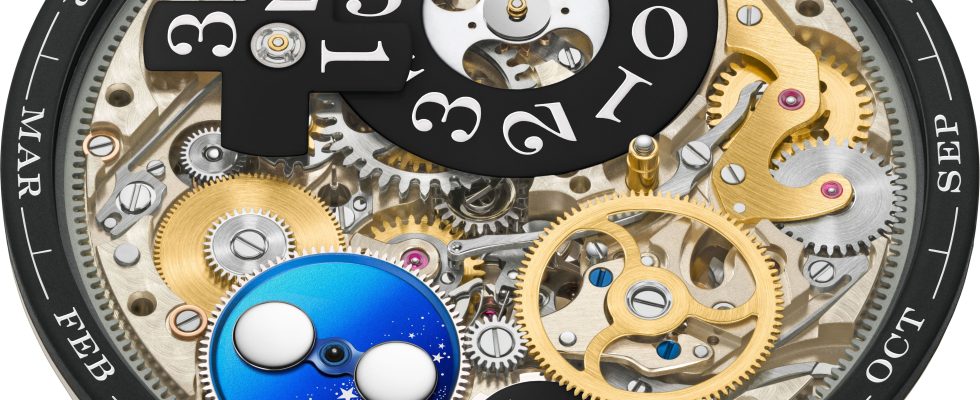With its retro look and oversized numerals, the big date seems to have always appeared on the dial of our traditional timepieces. This is not the case, quite the contrary. This invention was not the subject of a patent until… 1994, filed by the Saxon manufacturer A. Lange & Söhne.
It appears for the first time on the Lange 1 model, the watch that brought Glashütte’s sleeping beauty back into the spotlight. Walter Lange, grandson of the founder, was inspired by a clock from the Semper Opera in Dresden, with juxtaposed digital dials, and named this complication “big date” allowing optimal readability of the date of the month on two windows.
The mechanism is based on two discs, one for units, the other for tens, which animate without overlapping. A setting that requires precision when changing the date at midnight. One of the particularities is that the digit 3 of the tens switches after one or two days, compared to ten for the 0, 1 and 2.
A. Lange & Söhne continues to embody this complication on its Lange 1 line, but other watchmaking houses are also seduced by this display. Like Mido, in the Multifort TV Big Date collection, where the large date window sits at 12 o’clock, the design of the watch pays homage to the cult shape of a retro television screen. Maurice Lacroix, for his part, chooses to infuse an urban style to revisit a model from the 1990s on the Aikon Master Grand Date Technicolor. To mark its 35th anniversary, the Frederique Constant manufacture is unveiling a new movement, the FC-735 caliber, which combines three complications: power reserve, moon phase and, of course, big date.
An article from the special “Watchmaking” section of L’Express, published in the weekly on December 7, 2023
